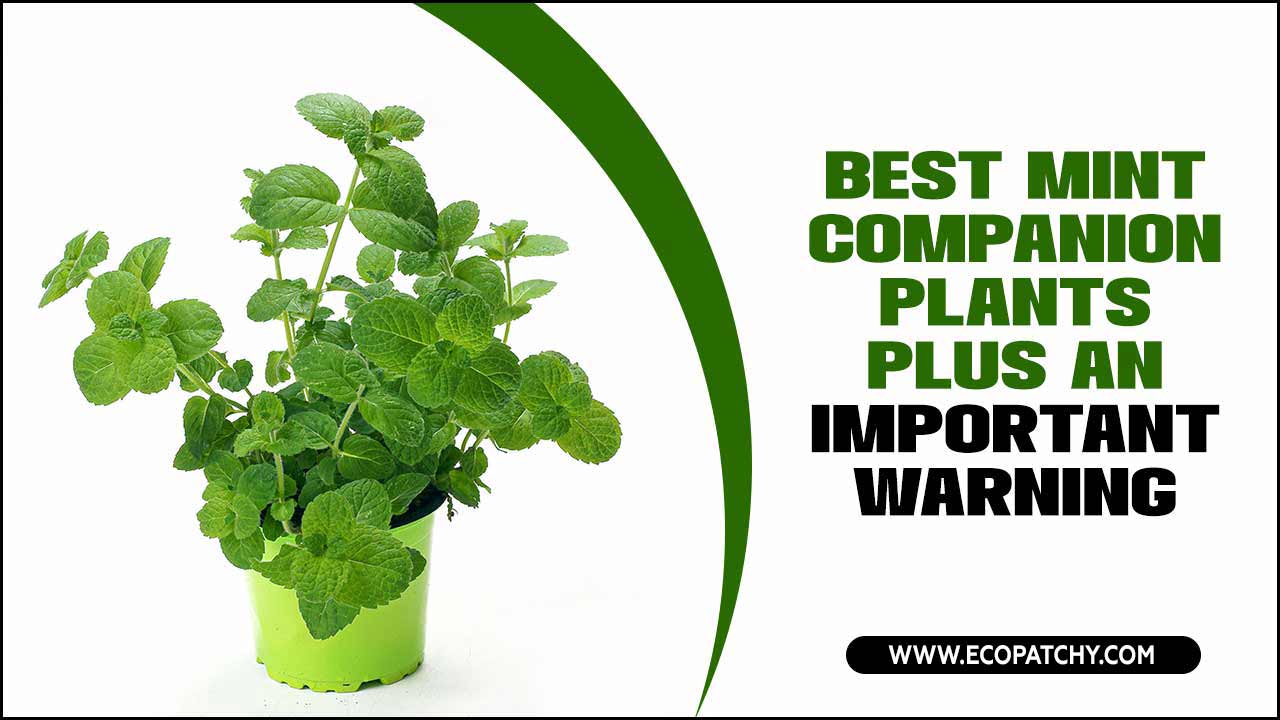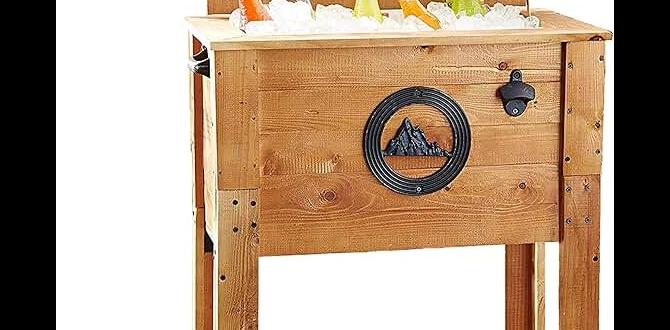Grow chili plants effortlessly with these simple tips! Get ready for spicy, fresh peppers from your own garden, whether indoors or out. This guide covers everything a beginner needs for a successful harvest.
Dreaming of adding some homegrown heat to your meals? Growing chili plants might seem intimidating, especially if you’re new to gardening. The thought of wilting leaves or no peppers at all can be frustrating. But what if I told you that with a few straightforward techniques, you can enjoy a bountiful chili harvest with surprising ease? You can absolutely grow delicious chili plants, and this guide will show you exactly how, step-by-step. Get ready to discover the simple secrets to successful chili growing!
Starting Your Chili Adventure: From Seed to Sprout
The journey of a chili plant begins with a tiny seed. Choosing the right variety is your first exciting step. For beginners, some varieties are more forgiving and easier to grow. Think about the kind of heat you enjoy – mild anaheims for roasting, or perhaps a touch of jalapeño? Once you’ve picked your pepper, it’s time to get them started.
Choosing Your Chili Varieties
Every chili pepper has its own personality! Some are mild and fruity, while others pack a serious punch. For new gardeners, starting with easier-to-grow varieties is a great idea. These often mature faster and are more resistant to common pests and diseases.
- Mild & Easy: Bell Peppers (though technically not hot, they’re in the pepper family!), Anaheim, Pimento, Poblano.
- Appealing Heat: Jalapeño, Serrano, Cayenne.
- For the Brave: Habanero, Scotch Bonnet (these can be a bit trickier for first-timers but very rewarding!).
When and How to Start Seeds
Timing is everything when sowing chili seeds. Most chili plants love warmth and don’t do well with frost. It’s best to start seeds indoors about 6-8 weeks before your last expected frost date. This gives them a strong head start.
Here’s how to get those seeds germinating:
- Prepare Seed Starting Trays: Use small pots or seed starting trays filled with a light, well-draining seed starting mix.
- Sow the Seeds: Plant chili seeds about 1/4 inch deep. You can plant 1-2 seeds per cell.
- Water Gently: Lightly mist the soil with water. Avoid waterlogging, as this can cause seeds to rot.
- Provide Warmth: Chili seeds need warmth to germinate, ideally between 70-80°F (21-27°C). A heat mat can be very helpful.
- Keep Them Moist: Cover the trays with a plastic dome or cling wrap to maintain humidity. Check daily and mist as needed.
- Watch Them Grow: Germination can take anywhere from 7 to 21 days, sometimes longer for certain varieties.
Gearing Up: Essential Supplies for Seed Starting
You don’t need a lot of fancy equipment to get started. Here are the basics:
- Seed starting mix (not regular potting soil)
- Seed starting trays or small biodegradable pots
- Chili seeds
- Watering can or spray bottle
- Optional: Heat mat, grow lights, plastic dome
From Seedling to Star: Transplanting Your Chili Plants
Once your seedlings have a few sets of true leaves and the danger of frost has passed, it’s time to move them to their permanent homes. This process, called transplanting, is crucial for giving your plants room to grow strong.
Hardening Off Your Seedlings
Before you move your precious seedlings from the comfort of indoors to the great outdoors (or even a sunnier windowsill), you need to “harden them off.” This gradually prepares them for the harsher conditions outside, like direct sunlight, wind, and cooler temperatures.
Follow these steps for successful hardening off:
- Start Indoors: Begin by placing seedlings in a protected outdoor spot (like a porch or patio) for a few hours each day.
- Increase Exposure: Gradually increase the time they spend outdoors over 7-10 days.
- Shield from Direct Sun: Initially, keep them out of direct, harsh sunlight.
- Bring Them In: Bring them back indoors at night, especially if temperatures drop significantly.
- Observe: Watch for any signs of stress, like wilting or leaf burn, and adjust exposure accordingly.
Choosing a Pot or Garden Spot
Chili plants can thrive in containers or directly in the ground. The key is ensuring they have enough space and good drainage.
- Container Growing: Pots that are at least 5 gallons (about 20 liters) in size are ideal for most chili plants. Ensure they have drainage holes!
- Garden Beds: Choose a spot that receives at least 6-8 hours of direct sunlight daily. Amend the soil with compost to improve drainage and fertility.
Planting Time!
When transplanting, handle the seedlings by their leaves, not their delicate stems. This prevents damage.
- Dig a Hole: Dig a hole slightly larger than the seedling’s root ball.
- Add Soil: You can add a little compost or a balanced slow-release fertilizer to the bottom of the hole.
- Place the Plant: Gently place the seedling in the hole. For many peppers, you can plant them a bit deeper than they were in their original pot; this helps encourage stronger root growth.
- Backfill: Fill the hole with soil, gently firming it around the base of the plant.
- Water Well: Water thoroughly to help settle the soil and reduce transplant shock.
Sun, Water, and Food: The Essentials for Happy Chili Plants
Just like us, plants need the right conditions to thrive. For chili plants, this means plenty of sunshine, consistent watering, and a good diet.
Sunlight: The More, The Merrier!
Chili peppers are sun-lovers! They need at least 6-8 hours of direct sunlight per day to produce the best fruit. If you’re growing indoors, a south-facing window is ideal, or you might need to supplement with grow lights. This requirement applies whether they are planted outdoors in the ground or in containers on a patio.
Watering Wisely
The “thirsty” plant doesn’t always mean “water constantly.” Chili plants prefer consistent moisture but dislike sitting in soggy soil, which can lead to root rot. The best way to know when to water is to check the soil.
- Feel the Soil: Stick your finger about an inch or two into the soil. If it feels dry, it’s time to water.
- Water Deeply: When you water, water thoroughly until you see water draining from the bottom of the pot or the soil is moist several inches down in a garden bed.
- Avoid Overhead Watering: Try to water the base of the plant to keep the leaves dry, which helps prevent fungal diseases.
- Adjust for Weather: Plants in hot, sunny weather will need water more often than those in cooler, cloudy conditions.
Feeding Your Growing Chili Plants
Chili plants are relatively heavy feeders, especially when they start producing fruit. A well-balanced fertilizer will keep them happy and productive.
- When to Start: Begin feeding about 2-3 weeks after transplanting.
- Type of Fertilizer: Use a balanced, all-purpose fertilizer. Once flowering begins, you might switch to a fertilizer slightly higher in phosphorus and potassium to encourage fruit production. Look for numbers like 5-10-10 on the label.
- Frequency: Follow the instructions on your fertilizer package. Typically, feeding every 2-4 weeks is sufficient. For container plants, you may need to feed more frequently as nutrients can leach out with watering.
A reliable option for gardeners looking for sustainable feeding practices is to incorporate compost. If you’re interested in making your own, check out the resources from the U.S. Environmental Protection Agency on home composting. Compost adds vital nutrients and improves soil structure, making it a win-win for your plants and the environment.
Troubleshooting Common Chili Plant Problems
Even with the best care, you might encounter a few issues. Don’t worry! Most common problems are easy to fix with a little observation and the right approach.
Pests: The Unwanted Guests
Common chili plant pests include aphids, spider mites, and whiteflies. They love to munch on leaves and sap.
- Identification: Look for tiny insects clustering on leaves and stems, or webbing (for spider mites).
- Solutions:
- Hose Them Off: A strong blast of water can dislodge many pests.
- Insecticidal Soap: This is a safer option for many edible plants. You can buy it or make your own by mixing a teaspoon of mild liquid soap with a quart of water.
- Neem Oil: Another natural option that works well against a variety of pests.
- Handpicking: For larger pests, simply pick them off.
Diseases: Keeping Plants Healthy
Fungal diseases, like powdery mildew, can appear, especially in humid conditions or if plants are overcrowded. Root rot is another risk if plants are overwatered.
- Prevention is Key: Ensure good air circulation, water at the base of plants, and avoid overwatering.
- Treatment: Remove affected leaves immediately. For more severe issues, a fungicide approved for edible plants might be necessary. Ensure your soil has good drainage; for container plants, this might mean repotting with fresh, well-draining soil if root rot is suspected.
Environmental Stress: When Things Get Too Hot (or Cold!)
Chili plants are sensitive to extreme temperatures. Too much heat can cause flowers to drop, while cold snaps can stunt growth.
- Heat Stress: Ensure plants have adequate water and consider providing partial shade during the hottest part of the day in extreme heat.
- Cold Stress: If a cold snap is predicted, cover your plants with a frost cloth or bring potted plants indoors.
When and How to Harvest Your Chili Peppers
The moment of truth! Harvesting your own chilies is incredibly rewarding. Knowing when to pick them ensures the best flavor and heat.
Signs Your Chilies Are Ready
Most chili peppers change color as they ripen. They often start green and mature to red, yellow, orange, or even purple, depending on the variety.
- Color Change: The most obvious sign is the color. If your variety is supposed to turn red, wait until it’s fully red.
- Firmness: The peppers should feel firm and plump.
- Size: They will reach a good size for their variety.
- Flavor & Heat: For some peppers, flavor and heat develop more intensely as they fully ripen.
Harvesting Techniques
Use clean tools to avoid damaging the plant and to ensure healthy cuts.
- Use Shears or a Knife: It’s best to cut the pepper off the plant using sharp pruning shears or a knife. Leave a small piece of the stem attached to the pepper.
- Don’t Pull: Avoid simply pulling the peppers off, as this can break branches and damage the plant.
- Harvest Regularly: Picking ripe peppers encourages the plant to produce more!
What to Do with Your Bounty
Fresh chilies can be used immediately in countless recipes. If you have too many to use at once, there are many ways to preserve them:
- Drying: Air-dry them by stringing them up or using a dehydrator.
- Freezing: Wash, dry, and freeze whole or chopped peppers in airtight bags or containers.
- Pickling: Brine them in vinegar for delicious pickled chilies.
- Making Hot Sauce: Blend them with other ingredients for a custom hot sauce.
Growing Chilies Indoors: A Spicy Success Story
Don’t have a big yard? No problem! Chili plants are fantastic for indoor growing, bringing fresh flavor and vibrant life to your home.
Container Choice Matters
For indoor gardening, the right pot is essential. As mentioned before, at least a 5-gallon pot is recommended for good root development. Terra cotta pots are excellent as they allow soil to breathe, but plastic pots can also work well, provided they have excellent drainage.
Light Requirements Indoors
This is the most critical factor for indoor chili plants. They need bright light.
- South-Facing Window: A window that gets direct sun for most of the day is your best bet.
- Grow Lights: If natural light is insufficient, invest in a good quality LED grow light. Position it about 6-12 inches above the plants and run it for 12-16 hours a day. Check out resources like those from Gardening Know How for tips on selecting and using grow lights effectively.
When to Water and Feed Indoors
Indoor plants have different watering needs than outdoor ones. They tend to dry out more slowly due to less wind and potentially cooler temperatures.
- Check Soil Moisture: Always check the soil by hand before watering.
- Fertilizing: Indoor plants will still need feeding. Use a diluted liquid fertilizer every 3-4 weeks during the growing season.
Air Circulation for Indoor Plants
Good airflow is important to prevent fungal issues indoors. If your space is stagnant, consider using a small clip-on fan set to low for a few hours a day to mimic a gentle breeze.
The Joy of Outdoor Chili Gardening
For those with a garden or patio space, outdoor chili growing offers abundant rewards. It allows plants to take full advantage of natural sunlight and rain (though you’ll still need to monitor watering).
Choosing the Perfect Spot
Outdoor locations should receive maximum sunlight – at least 6-8 hours of direct sun daily. Good drainage is vital if planting directly into the ground. Raised beds are an excellent option for improving drainage and soil quality.
Companion Planting for Healthier Plants
Certain plants can benefit chili plants when grown nearby. This practice, known as companion planting, can help deter pests and improve growth.
- Beneficial Companions: Basil, oregano, parsley, marigolds, and nasturtiums are often planted near peppers.
- Why it Helps: Basil can deter flies and thrips, while nasturtiums can act as a trap crop for aphids, drawing them away from your valuable chili plants.
Dealing with Outdoor Pests and Weather
Outdoor plants face a wider range of pests and more unpredictable weather. Early detection is key. Regularly inspect your plants for any signs of trouble and act quickly using the methods mentioned earlier. Be prepared to protect plants from frost or intense heat as needed.
Container Gardening Outdoors
Growing chilies in containers on a patio or balcony is a popular and effective method. Large pots (5-gallon or more), good quality potting mix, and ensuring the containers get enough sun are the main requirements. Move pots to follow the sun if needed throughout the day.
| Aspect | Indoor Growing Tips | Outdoor Growing Tips |
|---|---|---|
| Sunlight | South-facing window or strong grow lights (12-16 hrs/day) | 6-8+ hours direct sunlight per day in a sunny location |
| Watering | Check soil moisture; dries out slower | Check soil moisture; may need more frequent watering in heat/wind |
| Soil | Well-draining potting mix | Well-draining garden soil or potting mix for containers; amend with compost |
| Fertilizing | Diluted liquid fertilizer every 3-4 weeks | Balanced fertilizer every 2-4 weeks; higher P/K during fruiting |
| Airflow | Use a gentle fan if needed | Natural airflow; ensure good spacing |
| Pest/Disease
|



